GLIMT
EYE CLINIC
Glimt Eye Clinic is run by contract specialists Birgit Grini Axe and Pia Wadel-Andersen.
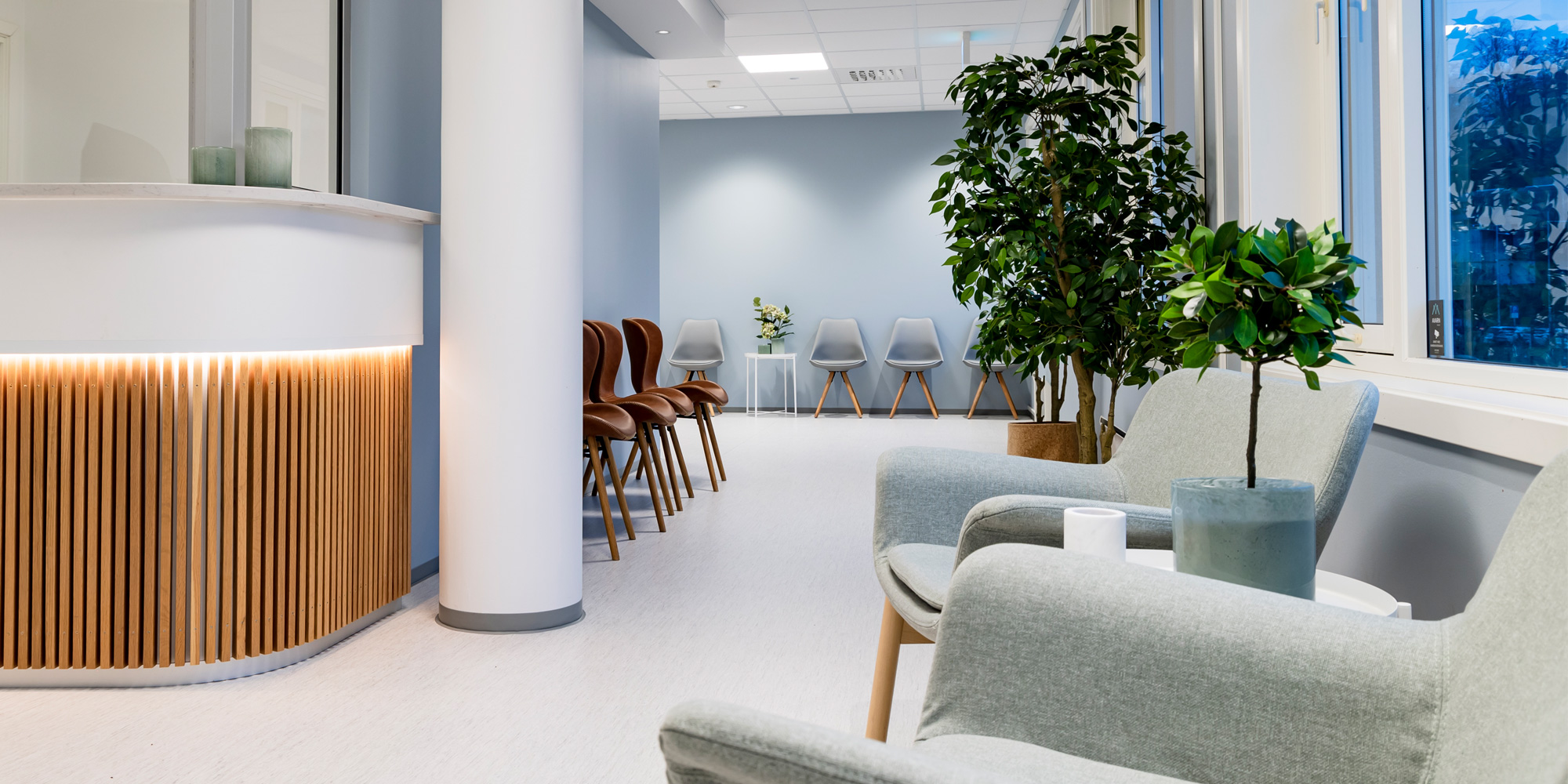
Glimt Eye Clinic is run by contract specialists Birgit Grini Axe and Pia Wadel-Andersen.
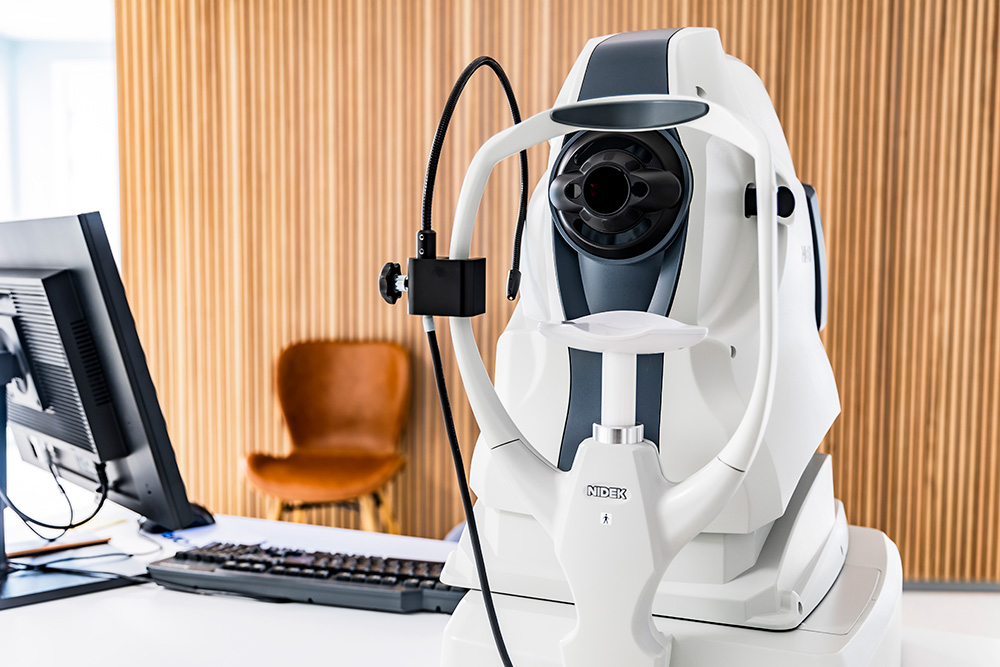
The clinic is located in Møllendal. The premises are spacious and modern, on the ground floor with easy access.
Paid parking is available in designated spaces in the Bunnpris garage across the street (see separate tab).
We have an operating agreement with Helse Vest. The price per consultation is the standard co-payment of NOK 403, and exemption cards can be used. For children under 16, there is no co-payment.
New patients must have a referral from a doctor, optician, or health clinic before an appointment can be given.
Scheduled appointments must be cancelled no later than 24 hours (working days) before the planned time. For later cancellations, a fee of NOK 403 will be charged for the unused appointment.
Glimt Eye Clinic is a public specialist healthcare service with an agreement with Helse Vest. Therefore, all our patients must be referred to the clinic. You can be referred by an optician, general practitioner, health clinic, or other specialist healthcare services.
The reason for referral must be a suspected disease or condition that requires treatment or follow-up by an ophthalmologist.
When we receive the referral regarding your eyes, we must use the information provided to assess how urgently you need an examination. Patients often feel that it is dangerous to wait a long time, but we must prioritize the cases where there is a real risk of permanent vision reduction or loss of sight. Ophthalmologists in Norway follow a common set of guidelines for prioritizing different symptoms and conditions.
If you have been referred to us by your general practitioner and feel that the wait is long, we recommend booking an appointment with an optician while you wait. An optician can examine your eyes very thoroughly, and if they suspect an acute condition, they will send information to us, allowing us to re-prioritize your case. They might even be able to find the solution to your problem.
You also have the option of seeing a fully private ophthalmologist if you want greater flexibility in scheduling appointments.
If your problem has resolved while waiting, you should cancel your appointment with us so that you do not extend the already long waiting list for those who need eye care.
Parking: We have designated spaces in the Bunnpris garage. From the garage, walk across the street and down towards the water, about 100 meters. Parking is paid by bank card at the clinic’s reception. For a regular consultation, the fixed price is NOK 39. For an eyelid surgery appointment, the price is NOK 49.
Our location: From the garage/bus stop, walk towards Bunnpris, turn left down towards the water, and pass Hyssingen Café. In the tall building on your left, you will find our entrance in the middle of the building. Look for our logo in the windows.
Arrive on time to avoid unnecessary delays. We work in healthcare and deal with people. Some patients need more time than expected, or acute cases may arise during the day that require immediate treatment. We always strive to be efficient and minimize unnecessary waiting, and therefore we need you to be ready when your appointment begins.
Do not attend wearing contact lenses. All contact lens users should have a spare pair of glasses available—please use these when coming for your examination with us.
Children should have clean glasses when they come to us, so we don’t have to spend time cleaning them.
Dilated pupils: Many patients (both children and adults) will need drops that dilate the pupils during an eye examination. This allows us to examine your eyes properly. Some people experience blurred vision for a few hours afterwards, while others feel they see quite normally. For your first visit to the ophthalmologist, we recommend using public transport or having someone drive you, so you can see how your vision is affected by the drops. Next time, you’ll know whether you need a driver or if you can drive yourself. Don’t forget to bring sunglasses.
Prescription glasses: We only issue prescriptions for glasses to children who are being followed by an ophthalmologist for amblyopia treatment.
Precise measurement of prescription strength for adults and older children can take some time and is not something we are meant to prioritize in public healthcare. You should see an optician if you suspect that you need glasses or contact lenses.
Has your problem resolved or been taken care of elsewhere? You should cancel your appointment with us if you no longer need help from an eye specialist. This way, the waiting time becomes shorter for those who do.
If you already have an ophthalmologist: You should stick to the same ophthalmologist as far as possible. Being referred to different offices is an unnecessary use of resources. Remember to inform your referrer about which ophthalmologist you have previously seen. Your former ophthalmologist also has important information and comparison data that a new specialist does not.
Dry eyes can be very uncomfortable but rarely pose a risk of permanent vision damage, and therefore have low priority among ophthalmologists with reimbursement rights, according to national prioritization guidelines. As a result, there is often a long waiting time for an appointment.
With dry eyes, common symptoms include excessive tearing, a gritty sensation, and burning in the eyes. The eyes may also appear red. Secretions can accumulate along the eyelid margins, and sometimes it may be difficult to open the eyes in the morning.
Dry eyes are often caused by blocked oil glands along the eyelid edges, and sometimes by eyelid inflammation. Some women may experience dry mucous membranes in connection with menopause. Most people who have undergone cataract surgery may also feel that their eyes are dry.
We recommend that you try the following treatment while waiting for your appointment with us:
Warm compress on the eyelids: To melt any hardened oil in the glands, it is recommended to warm up the eyelids. This can be done with a special mask, such as an Eyebag, which can be purchased at an optician or pharmacy. There are also cloth bags filled with dry rice that can be heated in the microwave and placed over the eyes. The mask should maintain a temperature of 39–40°C for at least 10 minutes to be effective.
Massage: After warming the eyelids, you can try massaging out the oil from the glands. You may put a drop of oil on a finger. Gently glide your fingers across the eyelid, pressing straight down toward the eye from the upper lid and straight up toward the eye from the lower lid. This should be done along the entire length of the eyelid.
Clean the eyelid margins with a clean cloth, a Q-tip moistened with a little water, or specially designed cleaning wipes such as Blephaclean, available at opticians and pharmacies.
Use plenty of preservative-free artificial tears, at least 4–6 times daily, and more often if needed. You cannot use them too often or in excessive amounts. These are available at pharmacies and some opticians.
Try these measures while you wait for your appointment with us.
The surgery is painless and only requires local anesthesia under the skin around the treated area.
We expect minimal bleeding, but there may be some swelling during the first few days after surgery.
Plan for about 2 hours from arrival until you are ready to go home.
You must not drive on the day of surgery.
On arrival, your face should be clean and without makeup. Avoid applying cream to your face that day. Take your daily medications as usual unless otherwise agreed with the ophthalmologist. Eat and drink normally on the day of surgery, but avoid alcohol for 48 hours beforehand.
After the surgery, the ophthalmologist will apply a generous amount of ointment, and you must continue applying the ointment 3 times daily until the stitches are removed (about 1 week after surgery). You will receive the ointment at the clinic.
At home:
When the anesthesia wears off, you may feel some stinging and tingling in the skin around your eyes. This is completely normal and can usually be relieved with paracetamol if needed. Days 2–4 are typically when swelling and discoloration around the eyes are most noticeable. This varies greatly from person to person and will gradually improve over the following days.
You should avoid heavy lifting, bending forward, and physical exertion for the first 4 days after surgery. Sleep on your back with your head elevated during the same period. Your face, except for the eyes, should only be washed with a clean cloth during these days so that the stitches and wound edges are disturbed as little as possible. If you need to wash your hair, make sure the water runs backwards and not into your face. The stitches should remain as dry as possible all week, only covered with Chloramphenicol ointment as recommended.
Normally, sick leave is not required, but for occupations involving heavy physical work, sick leave will be given until the stitches are removed. This is usually agreed with the ophthalmologist at your examination.
The stitches will be removed after 7–10 days at our office. You will receive this appointment when you come in for surgery.
The cost of the surgery is NOK 958 (including co-payment and ointment to take home), and NOK 403 for stitch removal the following week. If you have an exemption card, the cost is NOK 572 for the surgery and NOK 0 for stitch removal.
Glasses for children aged 0–18:
In August 2022, the authorities introduced a support scheme covering all children aged 0–18 with prescriptions over +/- 1.00. Read more about this scheme here: https://www.nav.no/briller-til-barn
The idea is that all children with prescriptions stronger than +/- 1.00 will have a genuine need for glasses, and financial support has therefore been made available for them.
Children undergoing amblyopia treatment can also use this scheme for, for example, a spare pair of glasses, prescription sunglasses, or swimming goggles. The scheme can be used once per calendar year. It is fully digital, and the optician applies directly to NAV for reimbursement, so parents do not need to handle any application paperwork.
Amblyopia:
Some children have a difference between the eyes that puts them at risk of not developing sharp and clear vision in one eye. This is called amblyopia. In such cases, it is important to stimulate the weaker eye to be used more actively, in order to achieve the best possible development of visual acuity, with the help of glasses and/or an eye patch.
The children we follow at our clinic mainly fall into this category.
You can read more about this on NAV’s website here: https://www.nav.no/amblyopi
This condition has its own support scheme, which mainly applies until the child turns 10 years old.
The support scheme is currently manual, meaning a form must be submitted to NAV, and an amount (see link) will be reimbursed after the glasses order has been placed. This scheme can be used several times a year as long as there is a valid reason for ordering new glasses or lenses. The professional confirming the need (an ophthalmologist or optician) will assist in completing the form.
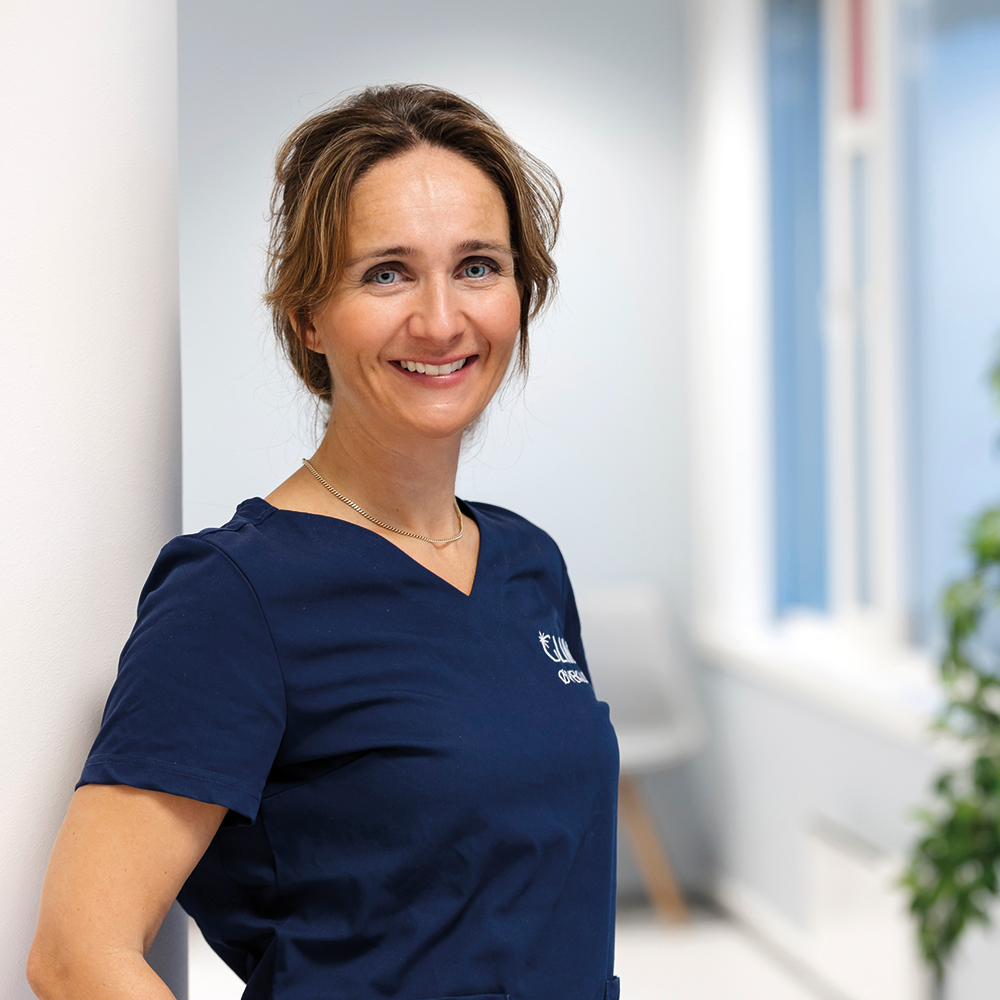
Ophthalmologist
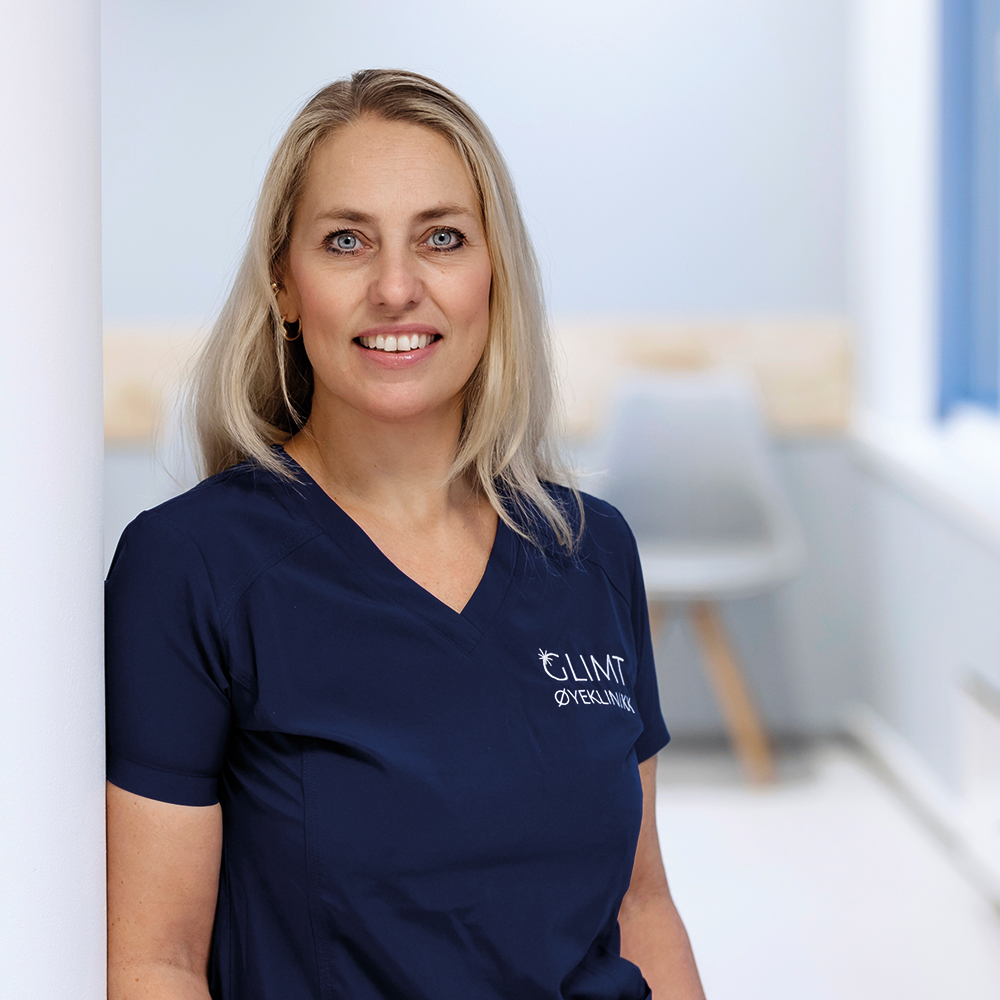
Ophthalmologist
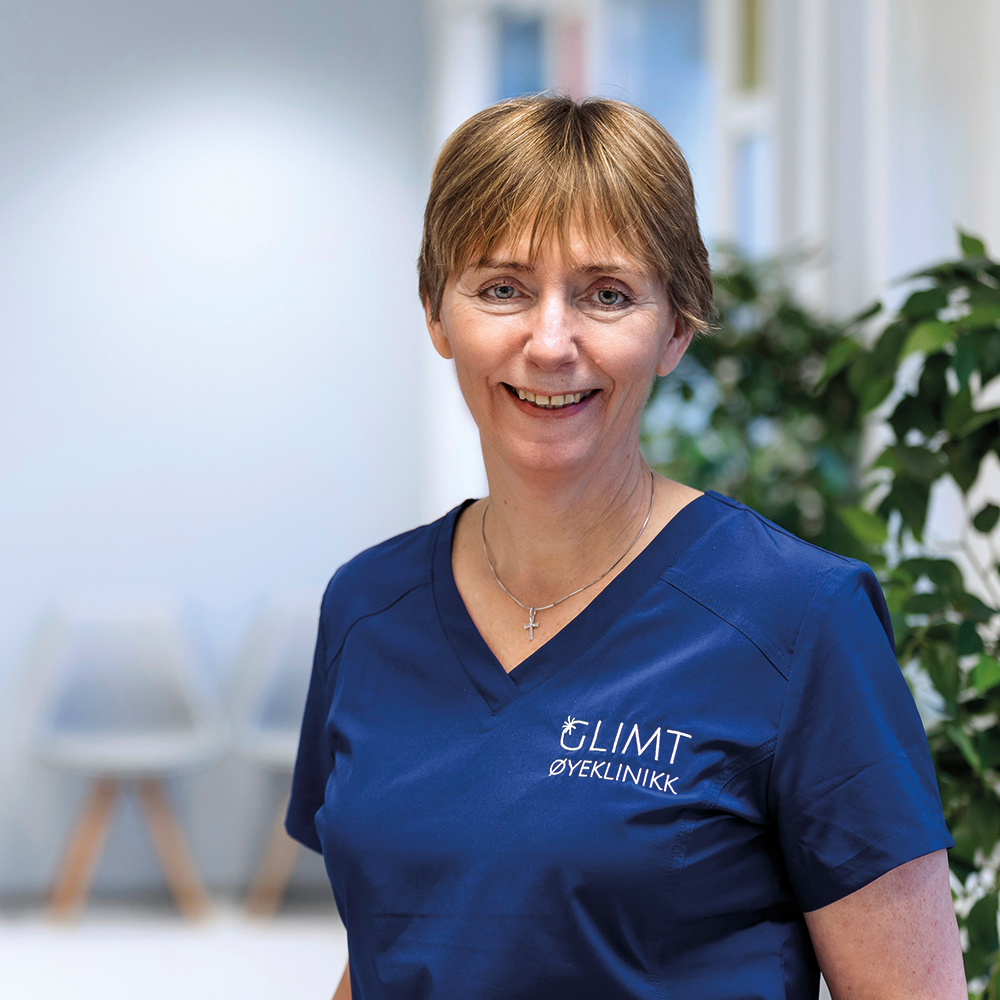
Ophthalmologist assistant
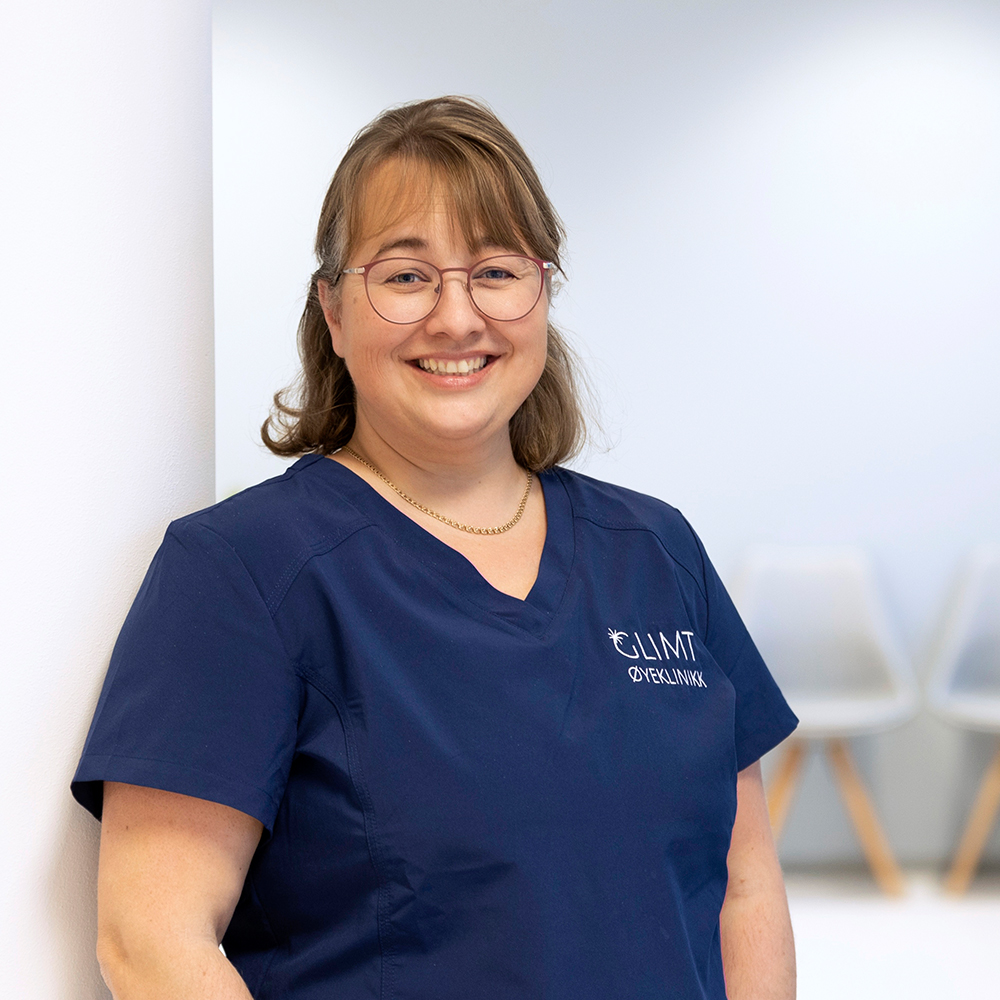
Ophthalmologist assistant
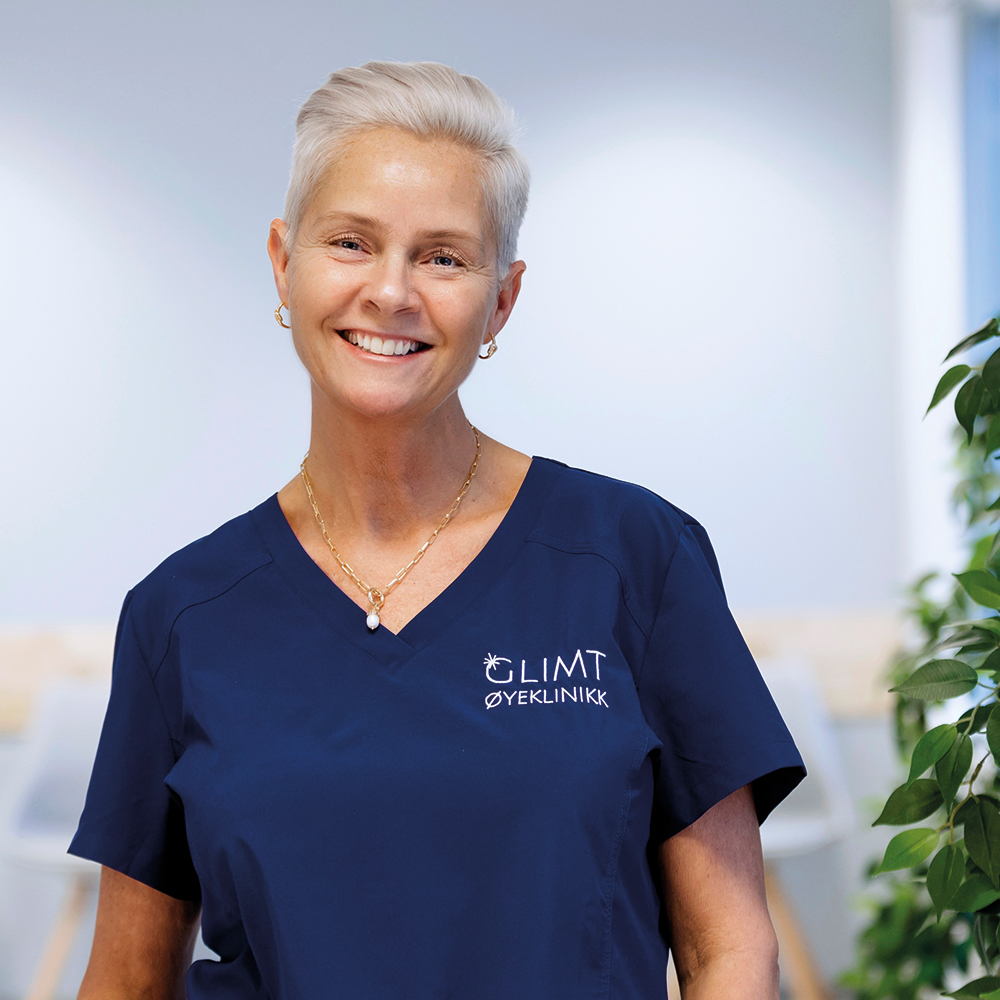
Assistant
Welcome to Glimt Eye Clinic
Welcome to Glimt Eye Clinic
Arrival
The ophthalmology practice has 10 clearly marked parking spaces available for a fee in a parking facility connected to the Bunnpris grocery store—about 50 meters from the clinic, on the opposite side of the street (see map). The spaces are located at the far end of the first level. The lights will turn on once you drive far enough into the garage. Due to somewhat limited parking, we encourage as many as possible to use public transport.
Parking is only valid while attending a consultation, and checks are carried out. Unauthorized vehicles will be removed at the owner’s expense.
Payment is made at a dedicated card terminal in the reception.
KLIKK PÅ MARKØRENE FOR MER INFO.
Arrival
Bus no. 12 runs through Møllendalsveien, to and from Haukeland University Hospital. You should use the stop called Møllendalsveien (located across from Møllendal Chapel). From there, walk towards Bunnpris and turn left down towards the water. You will find us on the ground floor of the building on your left (click the map for a facade image). Alternatively, you can walk from Haukeland down Møllendalsbakken.
CLICK ON THE MARKERS FOR MORE INFO. For further details, see www.skyss.no
Arrival
Bybanens line 2 is now open. You can take it to the stop called Fløen. The clinic is located about 200 meters from the stop (see map). If you are coming from the south of Bergen, you must transfer to line 2 at the Kronstad Bybane stop.
CLICK ON THE MARKERS FOR MORE INFO.
Arrival
Bergen City Bike has a station at Møllendal Allmenning, close to the clinic, and geographically Møllendal is also within the area where the much-debated electric scooters can be parked.
CLICK ON THE MARKERS FOR MORE INFO.

